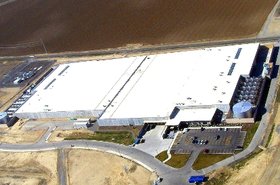The artificial intelligence (AI) revolution is driving a seemingly insatiable need for electricity.
Recent reports indicate that the pipeline of new data centers already requesting electricity from their local utility would double the energy capacity of the grid.
This is likely just the beginning of the long-term growth of data center demand for electric power.
It doesn’t seem likely that gains in computing efficiency will erase looming power forecasts — if computing becomes more energy efficient and cheaper, we’ll just use more compute, as AI pioneers like Nvidia founder and CEO Jensen Huang have called out.
Inevitably, the bottleneck for more compute will be the availability of electricity. This new constraint poses a major challenge for data center operators and owners.
How can you secure the massive amounts of power required to meet surging AI workloads? The answer lies in rethinking your relationship with electric utilities.
Meeting AI’s power needs with distributed energy resources
Traditionally, data centers have treated utilities as a vendor — simply procuring power as a commodity. But meeting AI's voracious energy needs will require new, deeper, and more forward-thinking collaboration.
Some utilities may struggle to keep up with the data center industry because building major new grid infrastructure is costly and slow.
Transmission and distribution upgrades are especially challenging: these investments often involve years of permitting, NIMBYism, lawsuits, and fights over how the infrastructure will be paid for.
Relying solely on the traditional playbook to meet this historic moment of load growth poses risks to data center operators and utilities alike. To meet the moment, data center operators need to work with utilities to pick up new tools at scale.
To support the availability and affordability of electric power, data centers must work with utilities to expand the scope of grid planning to incorporate distributed energy resources (DERs) into the core of how they plan to meet historic customer demand.
DERs like on-site solar, battery storage, and backup generation are smaller than utility-scale resources, and are therefore faster to build, and easier to site and permit.
If deployed in the right places, DER technologies can rapidly allow the grid to support incoming data center demand without heavy T&D investments, lowering the total cost of growing the grid.
DERs can also provide resilient, clean power sources at or near data center facilities, lowering congestion, increasing hosting capacity, and improving both power quality and reliability.
Although additional centralized generation, transmission, and distribution will be necessary, DERs can have a meaningful downward impact on the total infrastructure cost of building a grid capable of delivering a three or fourfold increase in electric power.
Lock in future availability of power with distributed capacity procurements
In today's sellers' market for electricity, utilities often require long-term capacity commitments from large power users like data centers. Rather than resist these take-or-pay requirements, data center operators should see them as a scalable new tool to achieve key business goals.
In many cases, this means working with utilities to co-develop distributed capacity procurement (DCP) programs that allow utilities to plan, capitalize, and strategically deploy DERs across their footprints, including at or near data center facilities.
These deployments can be supported by long term take-or-pay offtake commitments, effectively subscribing in advance, with predetermined pricing and terms, to the future power and capacity resources the DERs provide.
This approach can be the most direct way for data centers to secure guaranteed, cost-effective, and clean power supply aligned with the timing of their growth trajectories.
This approach, if done right, can represent a win for all parties. Data centers get the power they need sooner, at a predictable cost.
Customers in a utility territory benefit from downward pressure on rates because data centers are paying a premium to lock in guaranteed availability and DER deployments help avoid costly transmission and distribution investments.
At the same time, utilities get to fulfill their charter of providing low-cost, reliable power to support economic development in their territory, while improving affordability and reliability.
DER Programs are emerging nationwide
Successful DER programs are already being deployed by the most innovative utilities facing the near-term challenges of rapid demand growth.
Georgia Power is leading the way with its Distributed Energy Resource (DER) Customer Program Pilot, through which it is poised to deliver 250MW of on-site power to support customer resilience needs, with a meaningful cost reduction, based on the value to the grid.
Similarly, the Fixed Power Backup Program launched by San Diego Gas & Electric has successfully provided customers with needed on-site resources to keep them safe from public service events related to wildfire avoidance.
In the Southeast, Duke Energy’s newly proposed program developed with Amazon, Google, and Microsoft will allow technology companies to purchase higher levels of clean energy than previously available, all the way up to 24/7 renewables.
As historic demand growth continues to rise across the country, it is expected that more utilities will develop offerings to help share the cost of power generation, storage, and demand management, to the benefit of the grid, ratepayers, and data center operators.
The time to engage your utility is now
For leaders in the data center industry, the time to engage with utilities is now - before interconnection queues become overloaded, utility commissions push back on investments in grid growth because of affordability concerns and site selection options dwindle.
By collaborating as partners on DER-enabled grid transformation, including new approaches like distributed capacity procurements, data centers, and utilities can pave the way for AI's next wave of innovation and economic growth.








